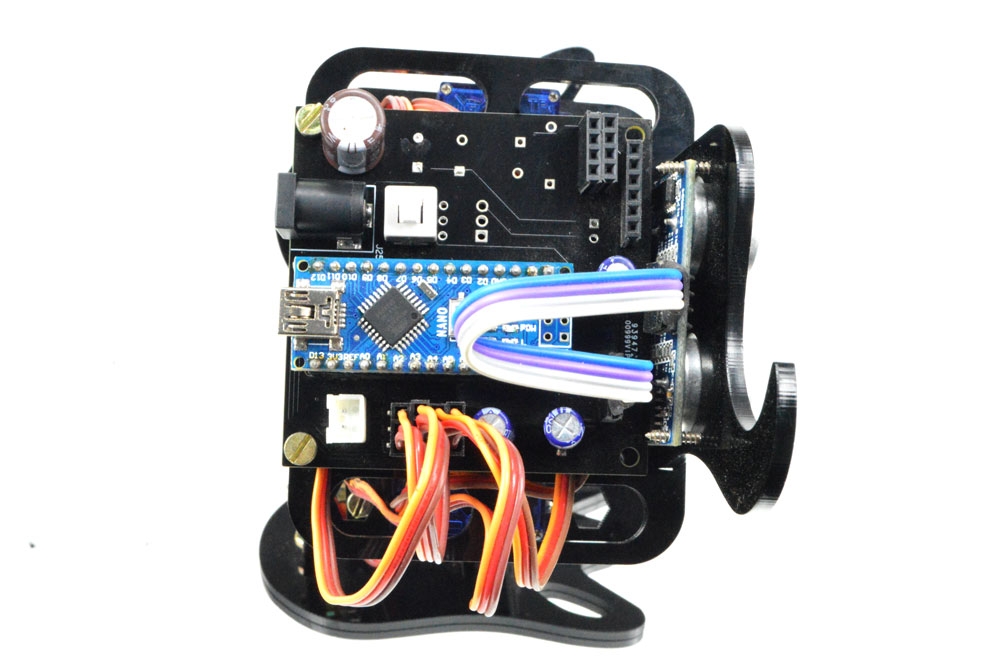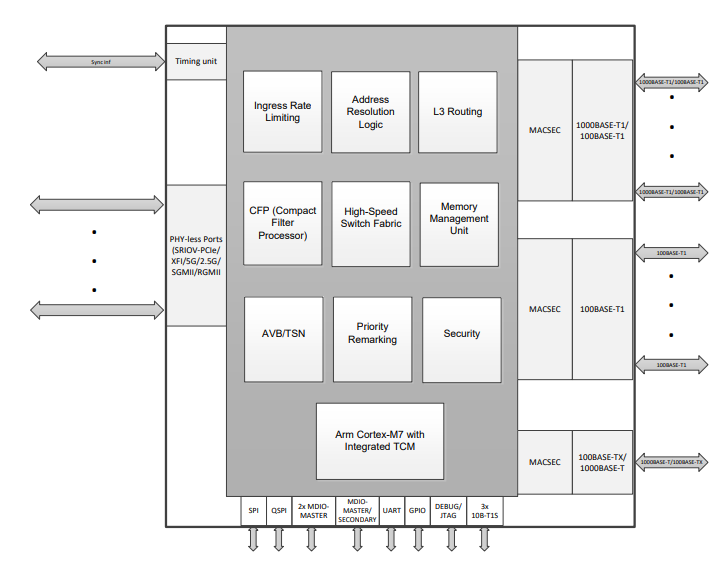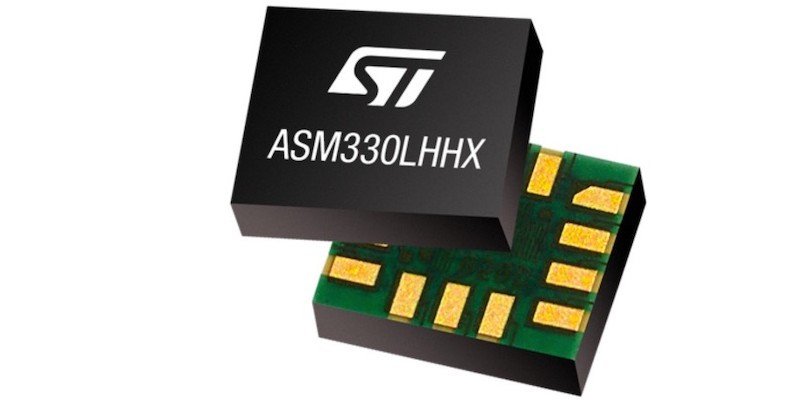Feeding the needs of next-gen automotive designs, chip companies have rolled out devices that are “firsts” in their categories.
A handful automotive component developers have introduced new devices to facilitate next-gen automotive system designs by enabling end-to-end networks and advanced position sensing technologies.
The device feeds the needs of the latest vehicle designs, which are integrating complex in-vehicle networks. These networks need to be organized with improved streamlined communication between the sensors, high-resolution cameras, and displays.
In this article, we round up some of the latest “firsts” among suppliers of automotive ICs, including Ethernet switches and IMU (inertial measurement unit) solutions.
Broadcom’s 50G Automotive Ethernet Switch
Ethernet switches are essentially the backbone of an automotive security system. In the networking communication world, dedicated Ethernet cables are used to transmit and receive information. In contrast, automotive Ethernet switches have a single-twisted cabling used to transmit and receive data simultaneously.
The 50G BCM8958X offers improved communication through the zonal ECU to enhance vehicle safety in any operating mode. Image (screenshot) used courtesy of Broadcom
With that in mind, in late May Broadcom announced what it claims is an industry first with the roll out of its 50G Ethernet Switch for automotive systems. The BCM8958X is a high bandwidth monolithic automotive Ethernet switch device that will allow for in-vehicle networking applications to encompass large bandwidth capabilities, says Broadcom.
Within its segment of the electronics market, automotive ICs are an area of continuous innovation. Naturally that means chip vendors will always be jockeying to be the “first” across a variety of types of automotive technologies. The products discussed here are great examples along those lines, and engineers are reaping the benefits of these advances.
Each area of the automotive system is broken up into function based groups called zones. The BCM8958X is equipped with 16 Ethernet ports with 6 ports hitting 10 Gbps and an integrated Ethernet 1000BASE-T1 transceiver. It is capable of encoding physical layer functions to establish noise mitigation, reliability, and deter transmission jitters.
According to the company, the BCM8958X is Broadcom’s 7th generation of its family of integrated L2+ multilayer Ethernet switch solutions for automotive applications. The 55 Gb/s device surpasses its predecessor, which is a Gbit multilayer Ethernet switch.
For the new device, the main upgrade has been the integration of an Arm Cortex-M7 processor and dedicated on-chip SRAM, which gives the switch the ability to send and receive frames in real-time. Utilizing this higher bandwidth switch enables low-powered subsystems to perform traffic filtering and automotive cable diagnostics with the current functional state of the vehicle. More information is available from the BCM8958X product brief.
ST’s Automotive IMU Provides Embedded ML
For its part, STMicroelectronics’ (ST’s) most recent “first” in the automotive space, also announced in late May, is what it claims is the first automotive IMU to embed machine learning (ML) capabilities. The device builds on ST’s technology developments micro-electromechanical systems (MEMS) and actuators.
The ASM330LHHX IMU leverages MEMS with a 3-axis accelerometer and a 3-axis gyroscope in a 2.5 mm x 3 mm footprint. Image used courtesy of STMicroelectronics
The ASM330LHHX offers a coupled 3-axis module that provides higher degrees of freedom than most IMUs in the market, according to ST. Its 6-axis capability consists of a 3-axis accelerometer and a 3-axis gyroscope. A quick search of 6-axis MEMS-based accelerometers will show solutions targeting portable navigation devices, wearables, drones, and augmented reality. ST is leveraging its capabilities in MEMS to establish the same stability for each sensor and the noise mitigation but in automotive systems.
Vehicle positioning and digital stabilization are sensing functions that benefit from the 6-axis module. And at its core, the IMU runs various AI algorithms directly on the sensor, which ensures low latency between any outside occurrence and the vehicle's response. In low power mode, the current flow is less than 800 µA for both the accelerometer and gyroscope. That means it can run continuously for anti-theft systems, motion-activated functions, and vibration monitoring.
Provided in a 2.5 mm x 3 mm x 0.83 mm SiP (system in package) configuration, the device is designed to address automotive non-safety applications such as vehicle alarms, tracking and monitoring, black-box systems, and navigation assistance.
The ASM330LHHX has two operating modes: Always-On and High-Performance. According to ST, these modes boost performance and accuracy for precise positioning, vehicle-to-everything (VX2) communication, impact detection, and crash reconstruction. More information is provided in the ASM330LHHX’s datasheet.
Marvell’s Automotive Ethernet Switch with Lockstep Tech
Claiming another automotive industry first is Marvell with the announcement of an automotive Ethernet switch with “lockstep” dual-core Arm processing redundancy. Marvell’s Brightlane automotive portfolio is a set of chips including Ethernet physical layer transceivers, bridges, and switches.
The new automotive Ethernet switch, the 88Q5192, is the third generation of Marvell’s Brightlane Ethernet Switch product line. The company claims that this design iteration as its most secure managed switch device within the Brightlane portfolio, thanks to the addition of lockstep dual-core Arm redundancy.
Marvell’s Brightlane 16-port switch features redundant lockstep processing using dual Arm CPU cores. Image used courtesy of Marvell
Scroll to continue with content
Marvell says its new switch offers a suite of advanced security and networking features that improve the vehicle's performance by establishing processing redundancy, higher reliability, increased data management, and a larger bandwidth. The 88Q5192 integrates IEEE 802.1AE-2018-compliant Media Access Control security (MACsec) protocols and an embedded Hardware Security Module (eHSM) for software authentication and data encryption.
Dual-core Arm Operates in Lockstep
A key feature of the device is its dual-core Arm R52 CPU. The CPU operates in lockstep, with dedicated on-chip memory to support Time Sensitive Networking (TSN) protocols like Precision Time Protocol (PTP). A security firewall protects from malicious external attacks. Marvell says this switch is well suited for use in automotive systems such as ADAS (advanced driver assistance systems), zonal control modules, body domain controllers, and central gateways.
Designers can leverage Marvell’s Brightlane portfolio to implement media dependent interface (MDI) termination resistors into the physical layer of the 4K MAC. This provides error-free transmission over a variety of media to reach distances that exceed 100 meters and will reduce the board component count, saving costs.
Marvell’s Ethernet switch is very similar to Broadcom’s latest switch, described earlier. Each offer 16-port capability along with 1000BASE-T1 media converters and 100 Mbps of automotive Ethernet data throughput (100BASE-T1). There is a slight advantage to Broadcom since its Ethernet switch can reach a switching capacity of 55 Gb/s. More information can be found in the 88Q5192 product brief.
Automotive Innovation Paves the Road Ahead





